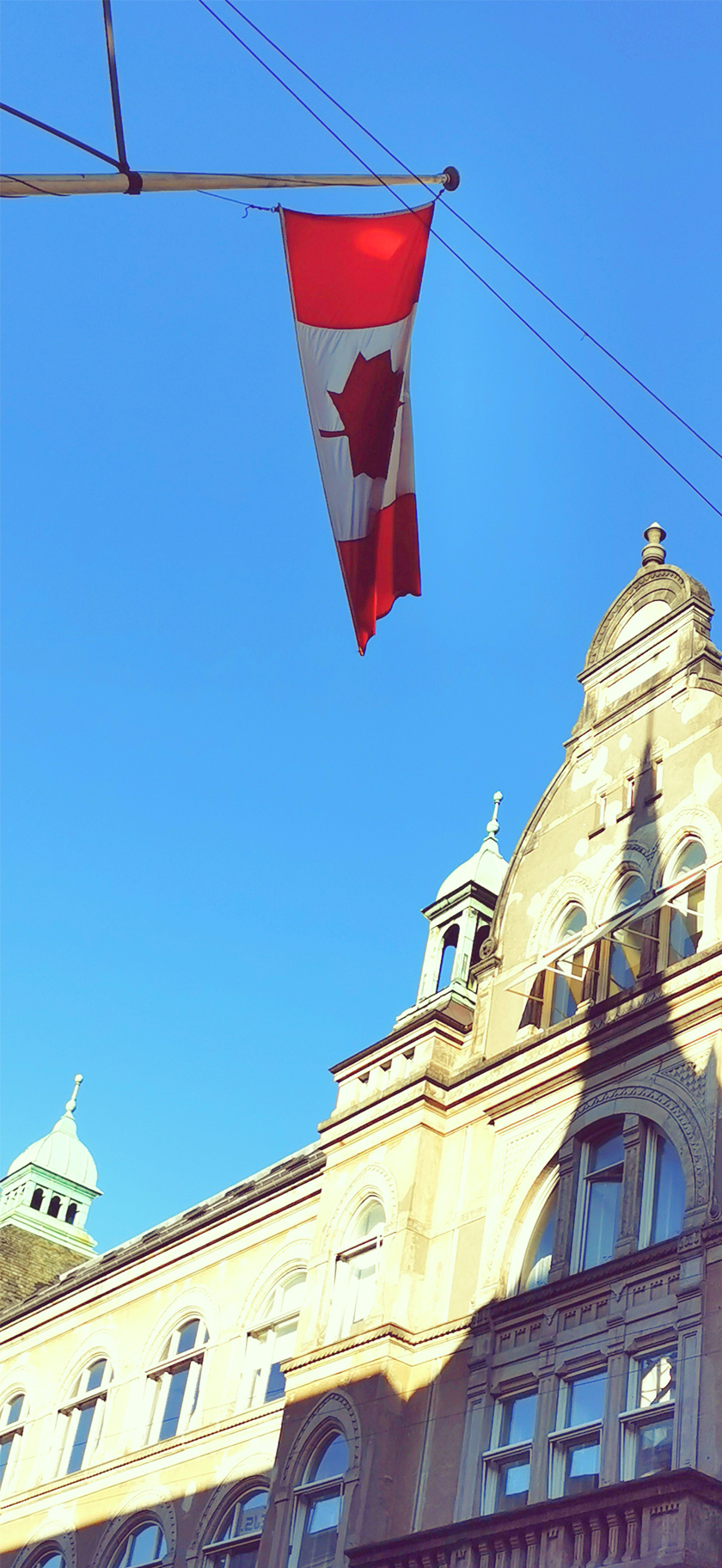The Hans Island War

When I arrived in Copenhagen, I was mortified to learn that Canada and Denmark have been at war for over 40 years. At the heart of the ongoing dispute is Hans Island, the smallest of three islands in the Nares Strait between Canada’s Ellesmere Island and Greenland. It is a desolate barren strip of rock not too far from the north pole that is frozen over with ice most of the year.
The Danes have claimed that Hans Island has belonged to them ever since the legal status of Greenland was handed over to Denmark back in 1933. But the border between Canada and Greenland in this area, according to a treaty ratified in the early 70s and after many geological surveys, is determined by the continental shelf. But from (80°49′12″N, 66°29′00″W) to (80°49′48″N, 66°26′18″W), a distance of just over one kilometre, there is effectively no border because the centre of Hans Island runs down the line of the shelf.
 Who actually owns Hans Island has never actually been officially decided and who shot first in the Hans Island War between Canada and Denmark is also under dispute. In the 1980s, a Canadian oil and gas company conducted geological surveys of the island prompting a Danish minister for Greenland to fly over by helicopter and plant a flag on the island alongside a bottle of schnapps with a message written: “Welcome to Denmark”. What was the greater act of aggression? A privately owned Canadian company conducting research on an uninhabited island? Or a Danish foreign minister boldly claiming that the island belonged to them? The conflict that would ensue belongs now to military history.
Who actually owns Hans Island has never actually been officially decided and who shot first in the Hans Island War between Canada and Denmark is also under dispute. In the 1980s, a Canadian oil and gas company conducted geological surveys of the island prompting a Danish minister for Greenland to fly over by helicopter and plant a flag on the island alongside a bottle of schnapps with a message written: “Welcome to Denmark”. What was the greater act of aggression? A privately owned Canadian company conducting research on an uninhabited island? Or a Danish foreign minister boldly claiming that the island belonged to them? The conflict that would ensue belongs now to military history.
In the 80s and 90s, Danish expeditions returned to Hans Island a handful of times to conduct their own surveys, but mostly to replace their flag which had either been blown away or torn to pieces in the inclement weather. Then, more than twenty years after the Danish minister staked his claim upon the island, Canadian troops landed on the island to seize it back. There was no resistance from the Danes and not a single shot was fired. The Canadian soldiers promptly built an Inukshuk and left a plaque with a Canadian flag that read “Welcome to Canada”. They celebrated their victory by drinking the Danish schnapps and before leaving the island, left their own bottle of Canadian whisky.
In 2006, a Vancouver geologist was issued a prospecting permit and made an expedition to the island. Noticing that the Canadian whisky had been drunk, he and his team promptly drank the Danish schnapps that had replaced it and made sure to leave behind a bottle of Canadian whisky for whoever should visit the island next – assuming that they would be Danish, of course.
Two years later, in a demonstration of international cooperation, the dispute was suspended when an international team of scientists, which included representatives from both Canada and Denmark, installed a permanent weather station on the island. And over the last fifteen years, satellite photos have been updated to further map out the area as well as a handful of further geological and other scientific surveys have been conducted. Canada and Denmark have mapped out a plan to resolve the issue and agreed on a border though the border has never actually been defined and negotiations remain ongoing.
In the forty years since the war began, there has not been a single human casualty directly related to the conflict. At least three bottles of Danish schnapps and Canadian whisky have been drunk on the island respectively, the result being that every invading force enjoyed their mission just a little bit more than had there not been something there to drink and help the soldiers and scientists stay warm.
Neither the Canadian nor the Danish armies instill fear in their enemies. Neither can boast of being able to overwhelm their adversaries by force of numbers or by technological superiority. Both, however, can demonstrate that an international dispute can be engaged without causing massive loss of life which should serve as a lesson to the international community that a dispute over a small strip of land is better settled with a drink than by dropping bombs. Schnapps or whisky, pick your poison, should be instated as the 21st century’s only weapon allowed to be used to settle international disputes because the truth is that were we not here to get emotional about it, this whole rock upon which we all live would be nothing more than small strips of land not worth fighting over. Geneva, get on it! And bottoms up everyone!